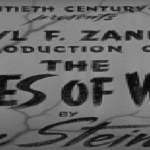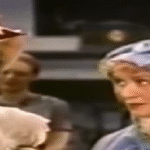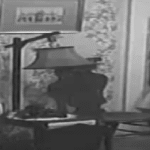In the pantheon of 1930s Hollywood dramas, Wives Under Suspicion (1938) stands as an intriguing, if lesser-known, film that reflects the era’s evolving cinematic style and societal preoccupations. Directed by James Whale—famous for his earlier work in horror classics like Frankenstein (1931) and The Invisible Man (1933)—this film shifts tone but retains the director’s keen eye for psychological tension and human complexity.
Wives Under Suspicion is a remake of Whale’s own 1933 film The Kiss Before the Mirror, but reimagined with more subtle character dynamics and updated to fit late-decade sensibilities. With its lean runtime of just 69 minutes, the film is a taut, noir-tinged legal thriller wrapped in a domestic melodrama. It questions the boundaries of justice, fidelity, and the thin line between moral duty and personal vengeance.
Plot Overview: Justice in the Shadows of Jealousy
The story follows District Attorney Jim Stowell, played with suave resolve by Warren William. At the outset, Stowell is preparing to prosecute a high-profile murder case involving a man accused of killing his wife in a fit of jealous rage. As he immerses himself in the case, evidence mounts that the defendant’s suspicions of infidelity were valid, stirring something within Stowell.
Suddenly, the case hits closer to home. Stowell begins to suspect his own wife, Lucy (Gail Patrick), may be involved in an affair. His confident demeanor slowly gives way to emotional turmoil. As his jealousy grows, Stowell finds himself mentally aligning with the man he’s prosecuting—grappling with the same inner demons, but with a crucial difference: he still has the choice not to act on them.
The narrative tension arises not just from the courtroom proceedings, but from Stowell’s internal struggle. Can he remain an impartial prosecutor while his own marriage disintegrates? Is he capable of upholding the law while his emotions teeter on the edge of lawlessness?
Themes: The Fragility of Trust and the Price of Power
At its core, Wives Under Suspicion explores the fragility of marital trust and the dangers of unchecked jealousy. The film cleverly blurs the line between personal and professional ethics, portraying a man whose role as a dispenser of justice becomes compromised by his own emotional vulnerability.
Jealousy is portrayed not as a fleeting feeling, but a corrosive force capable of distorting reality. The more Stowell obsesses over his wife’s possible infidelity, the more he projects his own insecurities onto her, regardless of actual evidence. This psychological unraveling becomes the heart of the film.
Additionally, the film interrogates the role of masculinity and pride in relationships. Stowell, a respected public figure, sees his wife’s perceived betrayal not just as a personal loss, but as an affront to his ego. His struggle mirrors the plight of the man he is prosecuting, suggesting that status and intellect are no defense against the primal forces of suspicion and rage.
Direction and Style: Whale’s Return to Inner Monsters
Though Wives Under Suspicion is far from the fantastical terrain of Whale’s horror hits, it nonetheless carries his signature interest in characters who are emotionally haunted. Whale’s direction is economical yet atmospheric, making effective use of shadows, reflective surfaces, and close-ups to convey the protagonist’s spiraling paranoia. In many ways, this film is as much about repression as it is about revelation.
The courtroom scenes are brisk and precise, but the real drama unfolds in domestic interiors—dimly lit drawing rooms, shadowed hallways, and tense bedroom conversations. These confined spaces enhance the claustrophobic feeling of suspicion creeping into every corner of Stowell’s life. There’s a quiet but persistent sense of doom that lurks beneath the film’s otherwise polished surface.
Whale also shows restraint in handling the subject matter. Unlike the original The Kiss Before the Mirror, which leaned heavily into expressionistic visuals and overt melodrama, Wives Under Suspicion is more grounded. The film benefits from this subtlety, allowing psychological tension to simmer rather than boil over into theatrics.
Performances: Subtle Strengths
Warren William anchors the film with a layered performance that balances charisma with vulnerability. Known in the 1930s as a charming, often morally ambiguous lead (seen in pre-Code films like Employees’ Entrance and The Mind Reader), William brings nuance to a character who is caught between the polished exterior of a public official and the raw emotions of a betrayed husband.
Gail Patrick, as Lucy, delivers a performance that keeps the audience guessing. Her character walks a fine line between flirtation and fidelity, and Patrick’s ability to appear both sincere and potentially duplicitous adds to the film’s ambiguity. Is Lucy truly unfaithful, or is she simply a victim of her husband’s paranoia? The film never fully resolves the question, and that ambiguity is part of its strength.
Ralph Morgan and Constance Moore round out the supporting cast with solid performances, but it is the interplay between William and Patrick that carries the emotional weight of the story.
Cultural and Historical Context
Released during the tail end of the Great Depression and just before the outbreak of World War II, Wives Under Suspicion reflects an America grappling with uncertainty and shifting values. Trust in institutions—whether marriage, government, or law—was being tested, and this film taps into that cultural unease.
It also reflects the constraints of the Production Code, which had tightened censorship in Hollywood by the mid-1930s. As such, the film relies more on implication than explicit behavior. Affairs are hinted at rather than shown, violence is restrained, and moral consequences are emphasized. Yet Whale skillfully works within these boundaries to explore themes that remain provocative.
Legacy and Modern Relevance
While Wives Under Suspicion may not enjoy the notoriety of Whale’s horror works or other courtroom dramas of the era, it remains a compelling artifact of its time. It serves as both a character study and a suspenseful legal drama, revealing the psychological cost of jealousy and the difficulty of separating one’s personal identity from professional responsibilities.
Its themes—infidelity, moral ambiguity, emotional repression—remain relevant today. In fact, one could easily imagine a modern adaptation with the same narrative beats, updated for contemporary sensibilities but retaining the same emotional core.
As part of Whale’s broader body of work, the film also highlights his range as a director. He was not just a master of monsters and the macabre, but a storyteller attuned to the quieter, more insidious threats that lurk in the human psyche.
Conclusion: A Forgotten Gem Worth Rediscovery
Wives Under Suspicion is a film that deserves renewed attention. Though often overshadowed by more famous entries in the legal or noir genres, it offers a compelling story told with intelligence and restraint. With strong performances, taut direction, and enduring themes, the film remains a thoughtful examination of what happens when suspicion infiltrates love—and how justice can falter when it becomes personal.
In the hands of James Whale, even a courtroom drama becomes a subtle horror story—one where the real monsters dwell not in laboratories or castles, but within the fragile human heart.







